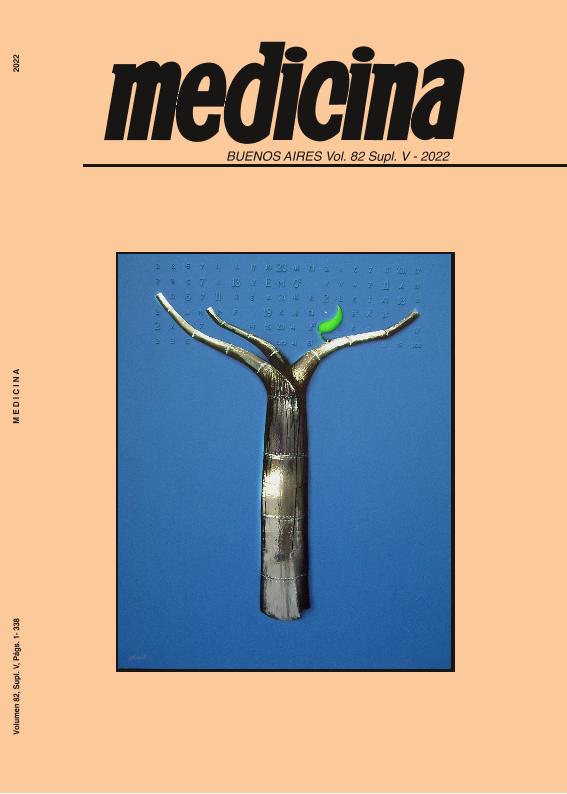Evento
Alterations of the efferent system in outer hair cells of a mouse model of hearing loss
Rias, Ezequiel Ignacio ; Simone, Santiago; Carignano, Camila
; Simone, Santiago; Carignano, Camila ; Stupniki, Sofia
; Stupniki, Sofia ; Vera, Marcela Sonia
; Vera, Marcela Sonia ; Spitzmaul, Guillermo Federico
; Spitzmaul, Guillermo Federico ; Dionisio, Leonardo Raul
; Dionisio, Leonardo Raul
 ; Simone, Santiago; Carignano, Camila
; Simone, Santiago; Carignano, Camila ; Stupniki, Sofia
; Stupniki, Sofia ; Vera, Marcela Sonia
; Vera, Marcela Sonia ; Spitzmaul, Guillermo Federico
; Spitzmaul, Guillermo Federico ; Dionisio, Leonardo Raul
; Dionisio, Leonardo Raul
Tipo del evento:
Reunión
Nombre del evento:
LXVII Reunión Anual de la Sociedad Argentina de Investigación Clínica; LXX Reunión Anual De La Sociedad Argentina De Inmunología; 3er Congreso Franco-Argentino De Inmunología y Reunión Anual 2022 De La Sociedad Argentina De Fisiología
Fecha del evento:
16/11/2022
Institución Organizadora:
Sociedad Argentina de Investigación Clínica;
Sociedad Argentina de Inmunología;
Sociedad Argentina de Fisiología;
Título de la revista:
Medicina (Buenos Aires)
Editorial:
Fundacion Revista Medicina
ISSN:
0025-7680
e-ISSN:
1669-9106
Idioma:
Inglés
Clasificación temática:
Resumen
KCNQ4 is a voltage-gated potassium channel responsible for ex- truding K+ from the outer hair cells (OHC) after sound stimulation. OHC excitability is under the control of the efferent pathway mediat- ed by the Medial Olivocochlear (MOC) system. In response to over- stimulation, this system activates the nicotinic acetylcholine receptor (nAChR) α9α10, which triggers calcium-dependent K+ channels (BK and SK2) activation, increasing K+ cell permeability, and helping KCNQ4 to restore the membrane potential. KCNQ4 absence leads to intracellular accumulation of K+ and chronic depolarization that may damage hair cells, causing hearing loss. We hypothesized that the lack of KCNQ4 in mice (KO) affects the organization and func- tion of the MOC system, impacting the hearing process. Using con- focal imaging, we evaluated the MOC terminals contacting OHC at two ages: when the auditory system is finishing maturation (2 weeks old (W)) and when it is fully developed (4W). At the mature age, the MOC terminals are located exclusively in the basal domain of OHC in wild-type (WT) animals. At 2W, both genotypes showed the same percentage (~50%) of synaptic contacts located in the lateral do- main. Later on, terminals were relocated to the basal membrane in WT while ~32% of them remain in the lateral domain in KO animals at 4W. Moreover, we detected a decrease in the number of synaptic contacts per OHC in 4W KO mice. The volume of the synaptic ter- minals did not change among genotypes at any age. On the other hand, we analyzed by qPCR the gene expression of the postsynap- tic efferent components located in the MOC synapse. The mRNA expression of α10 decreased ~3.5-fold with no changes in the α9 subunit, while BK and SK2 mRNA decreased ~8-fold in 4W KO ani- mals. These results demonstrate that chronic depolarization of OHC impairs the maturation process of the efferent synaptic innervation and the expression of its components in OHC, altering cell function and contributing to hearing detriment.
Palabras clave:
KCNQ4
,
DEAFNESS
,
POTASSIUM
,
COCHLEA
Archivos asociados
Licencia
Identificadores
Colecciones
Eventos(INIBIBB)
Eventos de INST.DE INVEST.BIOQUIMICAS BAHIA BLANCA (I)
Eventos de INST.DE INVEST.BIOQUIMICAS BAHIA BLANCA (I)
Citación
Alterations of the efferent system in outer hair cells of a mouse model of hearing loss; LXVII Reunión Anual de la Sociedad Argentina de Investigación Clínica; LXX Reunión Anual De La Sociedad Argentina De Inmunología; 3er Congreso Franco-Argentino De Inmunología y Reunión Anual 2022 De La Sociedad Argentina De Fisiología ; Mar del Plata; Argentina; 2022; 222-222
Compartir



